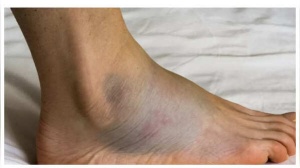Prediabetes is characterized by elevated blood sugar levels, exceeding the normal range but not yet reaching the threshold for a diabetes diagnosis. Early detection is crucial, as this condition is often reversible. With appropriate dietary adjustments and regular exercise, individuals can potentially revert to a pre-prediabetic state within months. While a blood test remains the definitive diagnostic tool, your body may exhibit certain telltale signs indicating elevated blood sugar levels, prompting the need for medical evaluation. Here are five such indicators, remembering that these symptoms aren't exclusive to prediabetes.

One of the initial manifestations of elevated blood sugar is amplified thirst. When blood sugar levels surge, the kidneys strive to eliminate the excess glucose through increased urine production, potentially leading to dehydration.
This initiates a cyclical pattern, where dehydration intensifies the sensation of thirst, even with consistent hydration. If you experience persistent thirst accompanied by frequent trips to the restroom, it may signal rising blood sugar levels.
Experiencing fatigue despite adequate sleep could be a significant warning sign. Elevated blood sugar can disrupt the body's utilization of glucose for energy.
When cells are deprived of sufficient glucose, feelings of weakness and exhaustion may ensue. This fatigue differs from typical tiredness, proving resistant to rest. Difficulty concentrating or maintaining alertness throughout the day may also be experienced. If you're constantly fatigued, including daytime sleepiness, seek medical advice.

Prediabetes can sometimes manifest on the skin. The appearance of dark, thick, velvety patches on areas such as the back of the neck, armpits, or groin can be indicative of a condition known as acanthosis nigricans.

These dark patches are often attributed to elevated insulin levels in the bloodstream, a common characteristic of prediabetes. The sudden development or worsening of these skin changes warrants medical attention to assess blood sugar control.
Elevated blood sugar can compromise the body's natural healing processes. Lingering healing times for minor cuts or bruises may indicate prediabetes.
When blood sugar is elevated, the immune system's functionality is impaired, and blood flow to the skin may be reduced. This combination slows down the healing process and elevates the risk of infections. Consult a healthcare professional if you observe persistently slow-healing wounds.
Individuals with prediabetes often experience heightened hunger, even after consuming meals. This phenomenon occurs because the body's cells are not receiving an adequate supply of glucose for energy, prompting the brain to signal for increased food intake, irrespective of actual hunger.
This amplified hunger can contribute to overeating and subsequent weight gain, further complicating blood sugar management. Persistent hunger or cravings, particularly for sugary or starchy foods, may be indicative of an underlying issue.
Newer articles
 Emma Raducanu Shuts Down Carlos Alcaraz Dating Rumors with Playful Wimbledon Press Conference Quip
Emma Raducanu Shuts Down Carlos Alcaraz Dating Rumors with Playful Wimbledon Press Conference Quip
 Rishabh Pant's "Revolutionary" Cricket Style Hailed by Greg Chappell
Rishabh Pant's "Revolutionary" Cricket Style Hailed by Greg Chappell
 5 Silent Signals of Prediabetes: Recognize the Warning Signs Before a Blood Test
5 Silent Signals of Prediabetes: Recognize the Warning Signs Before a Blood Test
 Wimbledon 2025: Broadcast Guide for India and US Viewers - Dates, Prize Money, and Streaming Details
Wimbledon 2025: Broadcast Guide for India and US Viewers - Dates, Prize Money, and Streaming Details
 Smith Targets Second Test Return After Innovative New York Rehab
Smith Targets Second Test Return After Innovative New York Rehab
 Gavaskar Calls for Kuldeep Yadav's Inclusion in Second Test Amid Bumrah Fitness Doubts, Cites Birmingham Pitch Advantage
Gavaskar Calls for Kuldeep Yadav's Inclusion in Second Test Amid Bumrah Fitness Doubts, Cites Birmingham Pitch Advantage
 Skin Signals: 7 Unexpected Signs of Heart Disease You Should Know
Skin Signals: 7 Unexpected Signs of Heart Disease You Should Know
 India Poised for Dengue Breakthrough as Vaccine Candidate Nears Trial Completion
India Poised for Dengue Breakthrough as Vaccine Candidate Nears Trial Completion
 Science-Backed Steps to a Healthier Heart: 5 Simple Habits for a Stronger You
Science-Backed Steps to a Healthier Heart: 5 Simple Habits for a Stronger You
 FIFA Club World Cup 2025: Upsets, Messi Magic, and 2026 World Cup Concerns Emerge From Group Stage
FIFA Club World Cup 2025: Upsets, Messi Magic, and 2026 World Cup Concerns Emerge From Group Stage